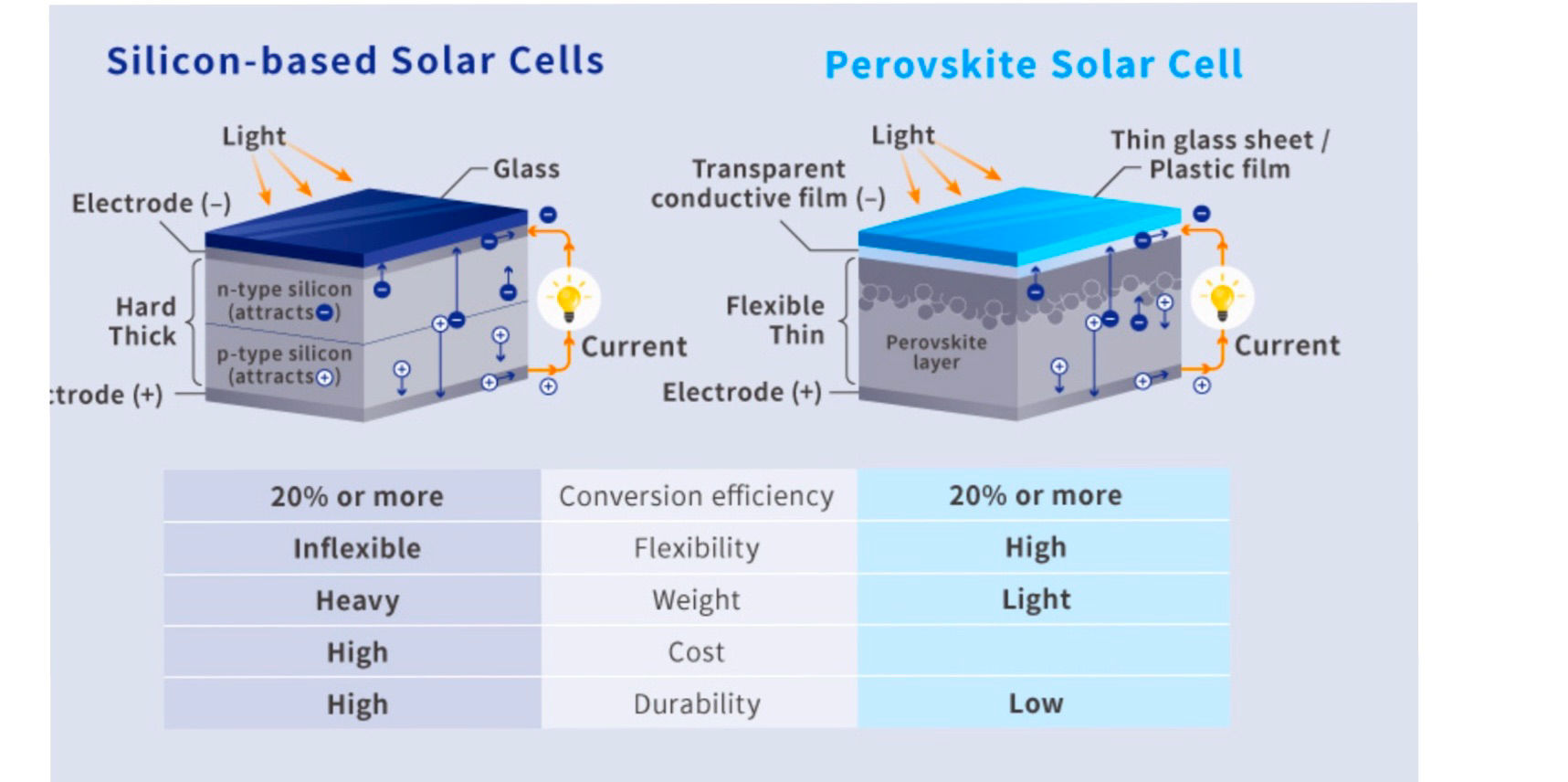What is PERVOSKITE and how it can change the future of Solar Energy?

Perovskite Solar Panels
The quest for efficient and sustainable energy solutions has led to significant advancements in solar technology. Among these, Perovskite solar panels have emerged as a promising alternative to traditional silicon-based cells. Japan, recognizing the potential of this technology, is investing heavily to integrate Perovskite solar panels into its energy
infrastructure. Concurrently, institutions like IIT Bombay are making strides in developing these innovative panels, aiming to contribute to the global renewable energy landscape.
What Are Perovskite Solar Panels?
Perovskite solar cells (PSCs) have attracted significant attention since the first one was fabricated in 2009. These materials belong to a large family of compounds that share a
common crystal structure and exhibit a wide range of properties. PSCs stand out for their high efficiency in converting sunlight into electricity and their low production costs. Unlike conventional silicon-based solar cells, Perovskite cells can be produced through solution based-methods, making them more flexible and easier to scale. Their unique crystal structure allows for the absorption of a broad spectrum of sunlight, contributing to their impressive energy conversion performance. However, a major challenge remains: PSCs tend to degrade under prolonged exposure to light, heat, or applied voltage, which limits their long-term stability compared to silicon cells.
Japan's Strategic Investment in Perovskite Technology
China, Japan, and South Korea are dominant players in the Asia Pacific Perovskite Solar Cell market due to an increase in energy demand in the Asia Pacific region as of 2024. These countries leverage established research ecosystems and governmental support to advance Perovskite technologies, enabling them to maintain market leadership through technological advancements and efficient production methodologies. Japan is positioning itself at the forefront of Perovskite solar technology. The Japanese government has set an ambitious goal to deploy 20 gigawatts (GW) of Perovskite solar capacity by 2040, equivalent to the output of 20 nuclear reactors. To achieve this, Japan is investing approximately $1.5 billion in the commercialization of ultra-thin, flexible Perovskite solar cells. These cells are significantly thinner than traditional panels and can be applied to various surfaces, including building facades and rooftops, making them ideal for Japan's densely populated urban areas. One of the key players in this initiative is Sekisui Chemical, which has developed a robust sealing resin to protect the Perovskite layers from moisture—a common challenge in solar panel longevity. With government subsidies, Sekisui aims to scale production and reduce costs, targeting a production cost of ¥10 (~ 6 rupees) per watt by 2040.
IIT Bombay's Contribution to Perovskite Solar Research
In India, the Indian Institute of Technology (IIT) Bombay is making significant contributions to Perovskite solar research. The institute's Department of Energy Science and Engineering is focused on developing high-efficiency Perovskite solar cells. Their research aims to enhance the stability and scalability of these cells, addressing key challenges such as moisture sensitivity and long-term durability. IIT Bombay's efforts are part of India's broader commitment to renewable energy. By advancing Perovskite technology, the institute is contributing to the nation's goal of achieving 175 GW of renewable energy capacity by 2022, with a significant portion expected to come from solar power.
The Future of Perovskite Solar Panels
The development of Perovskite solar panels represents a significant step toward more efficient and adaptable renewable energy solutions. Japan's strategic investments and IIT
Bombay's research initiatives are paving the way for the widespread adoption of this technology. As production scales up and costs decrease, Perovskite solar panels have the
potential to revolutionize the solar energy industry, offering a sustainable and cost-effective alternative to traditional energy sources. In conclusion, the integration of Perovskite solar panels into energy infrastructures promises a brighter, more sustainable future for generations to come.